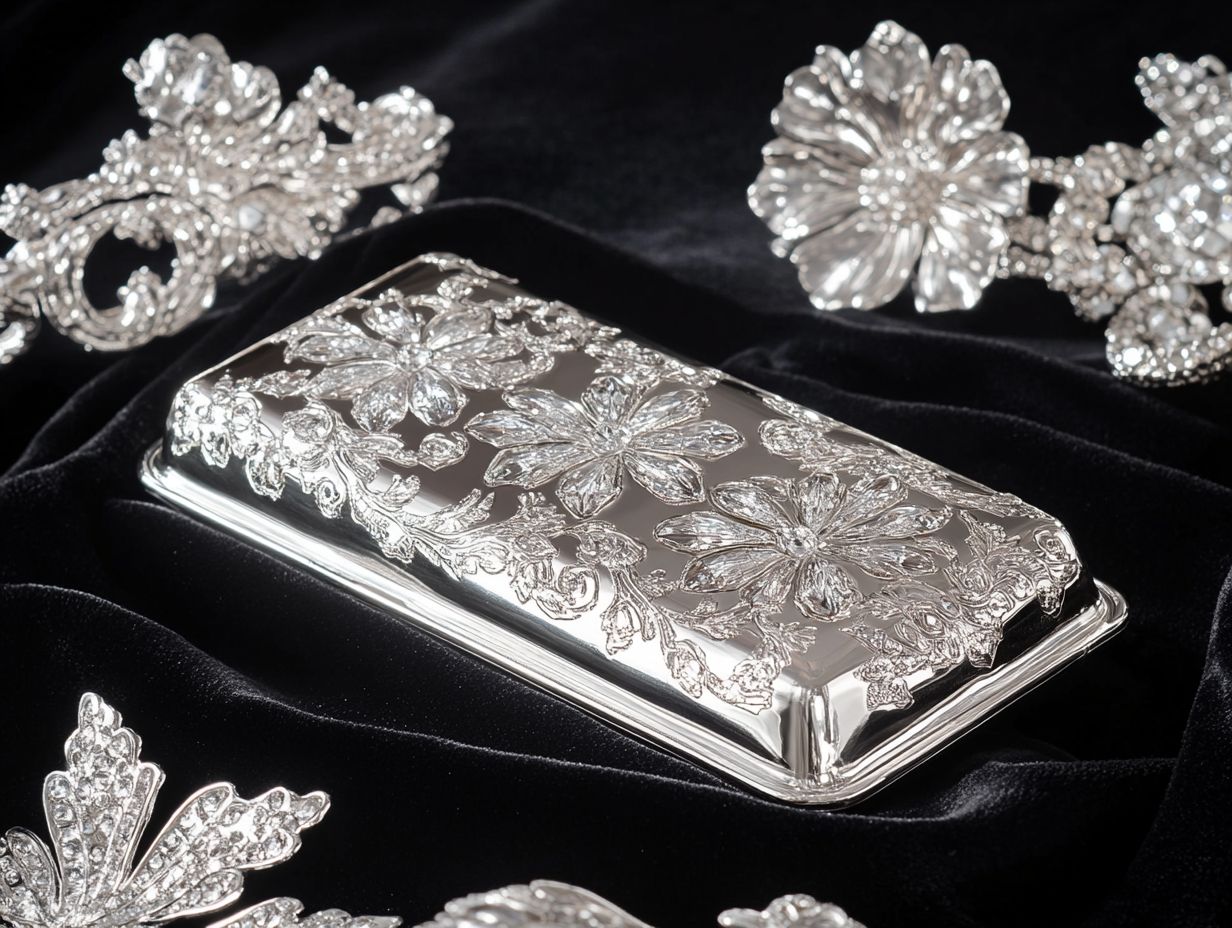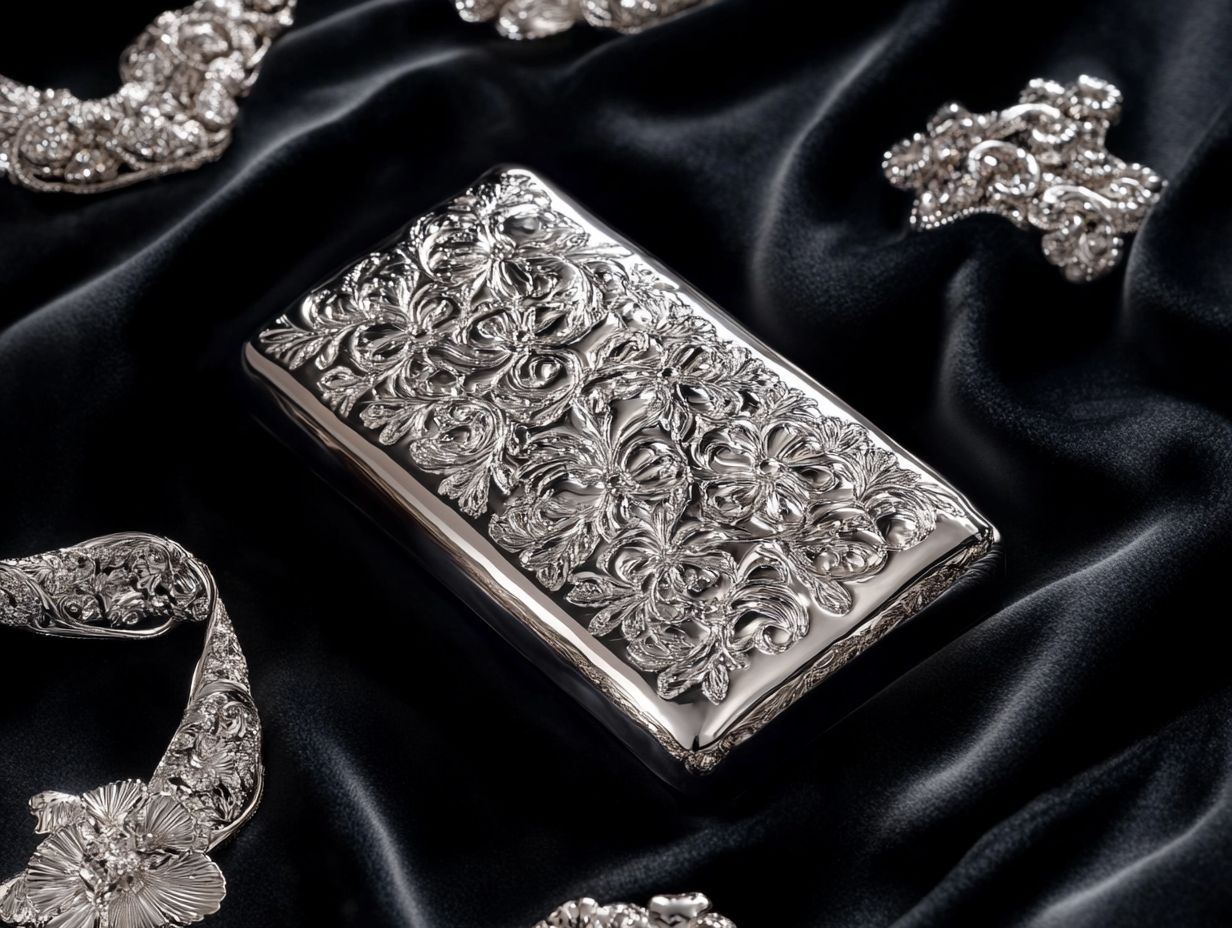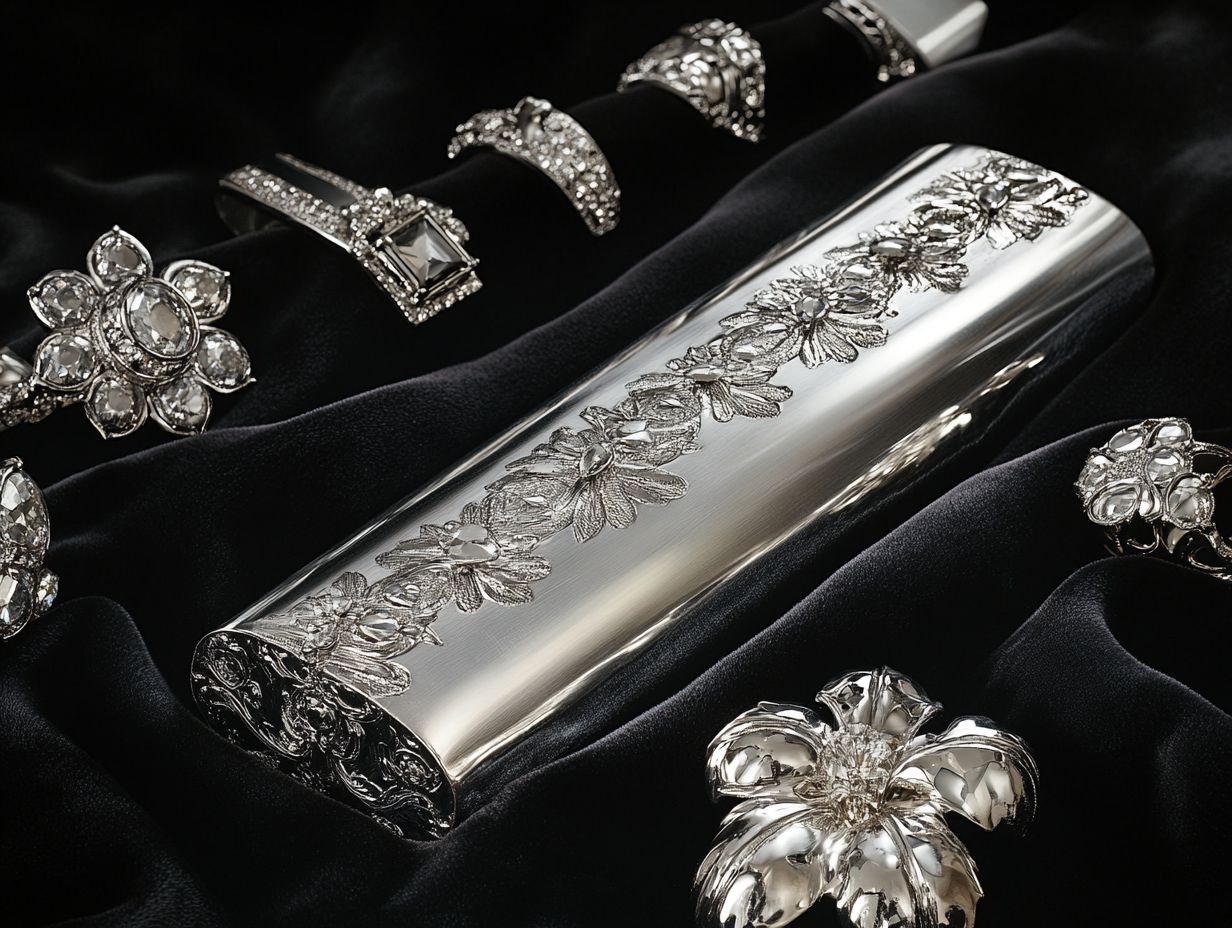Understanding Platinum: Characteristics and Uses
Get ready to explore platinum, a precious metal celebrated for its rarity and durability. It occupies a distinguished position across numerous industries and applications.
You will uncover its physical and chemical properties, revealing the unique characteristics that set platinum apart in both appearance and structure. The discussion also delves into its industrial uses, showcasing how it plays a vital role in sectors such as automotive and jewelry.
You’ll also discover alternative uses that highlight the remarkable versatility of this exceptional metal. Explore the captivating world of platinum and its many applications!
Contents
Key Takeaways:

- Platinum is a rare and durable metal with unique physical and chemical properties.
- It has a wide range of applications in various industries, including catalysis, jewelry, and electronics.
- Platinum also has alternative applications, such as in medicine and investment.
What is Platinum?
Platinum stands out as a unique chemical element, classified as a precious metal. It is celebrated for its high melting point and exceptional resistance to oxidation.
This heavy metal has been cherished since ancient times. Historical figures like Julius Caesar Scaliger recognized its rarity and significance.
In today s world, platinum remains a coveted resource, particularly in industries such as jewelry, automotive, and medicine. It establishes itself as an invaluable noble metal in modern applications.
The early 19th century marked a significant turning point with the discovery of platinum by the English chemist William Hyde Wollaston. His groundbreaking work highlighted platinum’s unique properties, paving the way for its incorporation into various technological advancements.
Platinum is often seen as a symbol of wealth and has long been associated with royalty. It has adorned ceremonial artifacts across different cultures. Beyond its aesthetic allure in fine jewelry, it helps reduce harmful emissions in vehicles, making it essential for sustainable technology.
Physical and Chemical Properties of Platinum
Understanding the physical and chemical properties of platinum is crucial for appreciating its diverse applications. Its high melting point and reactivity enable its effective use in catalytic converters and medical applications.
Appearance, Structure, and Chemical Composition
Platinum showcases a lustrous, silvery-white sheen and a dense, malleable structure, making it a premier choice for exquisite jewelry and various industrial applications.
This precious metal captivates the eye with its brilliant glow and impressive durability. It also has a strong resistance to corrosion. Chemically categorized as a transition metal, it holds the atomic number 78, reflecting a unique arrangement of electrons that contributes to its remarkable stability and low reactivity.
With tightly packed atoms defining its molecular structure, platinum exhibits a high density, typical of robust metals. Its notable melting point enhances its appeal, making it suitable for high-temperature applications while retaining its physical properties even in demanding conditions.
Industrial Uses of Platinum

The industrial applications of platinum are both diverse and vital. From its crucial function in automotive catalytic converters to its esteemed use in high-end jewelry and dental alloys, platinum demonstrates remarkable versatility as a precious metal.
Applications in Various Industries
Platinum s applications are impressively diverse, reaching across multiple industries. In the automotive sector, it plays a pivotal role in catalytic converters (devices that reduce harmful emissions in cars), essential for reducing harmful emissions and helping manufacturers comply with stringent environmental regulations.
In the realm of medicine, platinum s significance shines brightly, particularly in cancer treatment protocols involving cisplatin. Its effectiveness in chemotherapy underscores just how vital this element is in the fight against cancer.
But platinum doesn t stop there; it also dazzles in the jewelry industry, where its durability and brilliant luster make it the go-to choice for luxury pieces. Moreover, in the electronics field, it s essential for producing various components, including hard drives and connectors, thanks to its excellent conductivity and corrosion resistance.
Recent advancements showcase the development of more efficient catalytic converters and innovative medical applications that harness platinum compounds for targeted therapies, proving just how versatile and impactful platinum truly is.
Unique Qualities of Platinum
The distinctive qualities of platinum, with its remarkable durability and scarcity, place it in a league of its own. This noble and heavy metal is highly esteemed across a range of applications, from exquisite high-end jewelry to innovative medical technology.
Durability, Rarity, and Other Characteristics
Platinum is renowned for its remarkable durability, making it resistant to tarnishing and wear. Its rarity as one of the rarest metals on Earth adds to its allure.
This exceptional resilience stems from its high melting point and the strong metal connections that safeguard its surface from chemical reactions. These traits help platinum items keep their shine for years, making them the perfect choice for high-end jewelry where a lifetime of brilliance is paramount.
Due to its scarcity, platinum finds its way into specialized applications such as catalytic converters in automotive engines and various medical devices, where reliability and performance are essential. As industries increasingly seek materials that marry longevity with aesthetic appeal, platinum’s unique properties make it a hot commodity across various industries!
Alternative Uses for Platinum

Beyond its industrial applications, platinum offers a range of alternative uses, particularly in the medical field. Compounds like cisplatin play a crucial role in cancer treatment, showcasing the metal’s significance.
Innovative recovery methods in science also show how versatile and important platinum is today.
Non-Industrial Applications
In the world of non-industrial applications, you ll find that platinum plays a crucial role in medicine, particularly through drugs like cisplatin, which are instrumental in treating various cancers.
This powerful chemotherapeutic agent works by disrupting the DNA of cancer cells, effectively inhibiting their ability to divide and multiply. Alongside cisplatin, other platinum-based compounds, such as carboplatin and oxaliplatin, are also utilized in clinical therapies, showcasing the remarkable versatility of this precious metal in the fight against malignant growths.
With recent advancements in drug delivery systems, there s a concerted effort to enhance efficacy while minimizing side effects. Ongoing research delves into innovative recovery methods to optimize patient outcomes. Through these exciting developments, the medical community continues to tap into the unique properties of platinum, reinforcing its vital importance in healthcare.
Frequently Asked Questions
Curious about platinum? Here are some frequently asked questions!
What are the main characteristics of platinum?
Platinum is a dense, malleable, and highly valuable metal with a silvery-white color. It has a high melting point of 1,768 degrees Celsius and is resistant to corrosion. It is also a very rare metal, making it highly sought after.
Stay tuned for more fascinating insights on platinum!
How is platinum used in industry?

Platinum is widely used in the automotive industry. It plays a crucial role in catalytic converters, which reduce harmful emissions.
Why is platinum considered a precious metal?
Platinum is rare and valuable. It’s a symbol of wealth and luxury, with a rich history in jewelry.
What makes platinum different from other precious metals?
Platinum stands out among precious metals. It’s denser than gold and resists corrosion better than silver.
How is platinum mined and produced?
Platinum is mainly mined in South Africa, Russia, and Canada. The mining process involves drilling and extracting ore from the ground.
Can platinum be recycled?
Yes, platinum can be recycled! This process is more cost-effective and better for the environment than mining new platinum.















